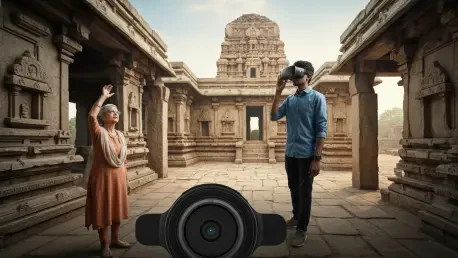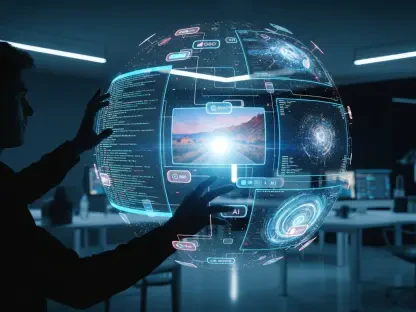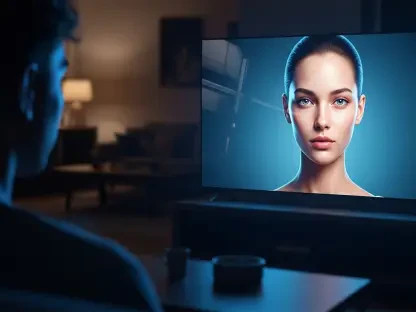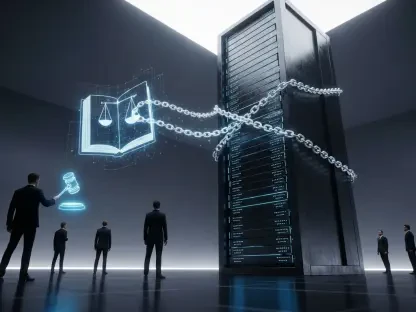Revolutionizing Cultural Preservation with XR
In an era where historic structures face accelerating threats from climate change and urban development, the challenge of preserving built cultural heritage has never been more pressing, especially for iconic landmarks like the Lausanne Cathedral in Switzerland. This Gothic masterpiece, dating back to the 12th century, is under threat from environmental degradation that jeopardizes its very foundation. Enter Extended Reality (XR), a suite of technologies encompassing Virtual Reality (VR), Augmented Reality (AR), and Mixed Reality (MR), offering innovative solutions to safeguard such treasures. This review delves into how XR is transforming heritage conservation, providing tools that not only aid experts in restoration but also engage the public in preserving history. The focus is on XR’s current capabilities, real-world applications, and its potential to redefine the intersection of technology and tradition.
Core Features and Performance of XR Technologies
Immersive Digital Co-Pilots for Conservators
At the heart of XR’s application in heritage conservation lies the concept of digital co-pilots, virtual assistants powered by spatial computing. These tools, accessible through tablets or specialized headsets, overlay critical data onto physical structures, enabling conservators to make informed decisions during on-site inspections. For instance, details about material composition or degradation levels can be visualized in real time, streamlining restoration processes. The precision and immediacy of this technology mark a significant leap forward in addressing complex conservation challenges.
Beyond mere visualization, these co-pilots integrate multidisciplinary data, offering insights into structural integrity and historical context. This capability proves invaluable when dealing with intricate monuments where every decision impacts authenticity. While the technology excels in controlled settings, its performance can be hampered by hardware limitations or inconsistent data quality in more remote or less-documented sites, highlighting areas for further refinement.
3D Modeling and Digital Twins as Foundational Tools
Another cornerstone of XR in heritage conservation is the use of 3D modeling and digital twins, created through advanced techniques like laser scanning and photogrammetry. These virtual replicas of historic structures serve as comprehensive databases, capturing every architectural nuance with remarkable accuracy. They allow for detailed analysis without risking damage to the original site, a critical advantage in preservation work.
Digital twins also facilitate public engagement by providing interactive platforms for education and exploration. Visitors can virtually tour a monument, uncovering hidden historical details or witnessing past configurations. However, creating these models demands significant resources and expertise, and their effectiveness depends on continuous updates to reflect ongoing conservation efforts or environmental changes, posing scalability challenges.
Cutting-Edge Innovations and Real-World Impact
Recent Advancements Shaping XR Applications
The landscape of XR in heritage conservation is evolving rapidly, driven by innovations in spatial computing and the integration of Artificial Intelligence (AI). AI enhances data analysis, enabling predictive modeling of material degradation and optimizing restoration strategies. Such advancements ensure that XR tools remain at the forefront of addressing both current and future preservation needs, adapting to diverse structural and environmental conditions.
A notable trend is the rise of public-facing XR applications, which democratize access to cultural heritage. Interactive apps allow users to explore historic sites through augmented overlays, blending education with engagement. Additionally, interdisciplinary collaboration among architects, historians, and technologists is becoming standard, ensuring that XR solutions are both technically sound and culturally sensitive, reflecting a holistic approach to conservation.
Case Studies Demonstrating Practical Deployment
Real-world applications of XR underscore its transformative potential, with projects like Heritage++ at Lausanne Cathedral serving as prime examples. Here, XR technologies have been employed for structural analysis, visualizing forces within the Gothic ceiling to ensure safety during restoration. This application not only aids conservators but also educates visitors about the engineering marvels of such structures through immersive experiences.
Further implementations reveal XR’s versatility in assessing material degradation and monitoring environmental impacts. By integrating sensor data with digital twins, conservators can correlate weather patterns with damage, tailoring interventions accordingly. These case studies, spanning various global historic sites, illustrate XR’s adaptability, though they also expose limitations in data integration across disparate systems, necessitating standardized protocols for broader adoption.
Challenges Hindering XR’s Full Potential
Technical and Environmental Barriers
Despite its promise, XR in heritage conservation faces significant technical hurdles. Hardware constraints, such as the bulkiness of headsets or limited battery life, can impede fieldwork, particularly in remote locations. Additionally, integrating vast datasets into cohesive XR platforms remains complex, often resulting in incomplete or inconsistent outputs that undermine reliability.
Environmental factors compound these challenges, as historic materials like sandstone degrade under the influence of climate change-driven weather extremes. XR tools must account for these dynamic conditions, yet current systems often lack the robustness to predict long-term impacts accurately. Ongoing efforts to enhance software algorithms and hardware durability aim to address these gaps, but progress remains incremental.
Regulatory and Ethical Considerations
Beyond technical issues, regulatory and ethical concerns loom large in XR applications for heritage. Ensuring historical authenticity while employing digital interventions raises questions about the balance between innovation and tradition. Over-reliance on virtual representations risks diluting the tangible value of original structures, a concern echoed by conservation purists.
Moreover, navigating regulatory frameworks for digital preservation across different regions adds layers of complexity. Ethical guidelines must evolve to govern how XR modifies or represents heritage, ensuring that cultural significance is not compromised. Collaborative initiatives between technologists and policymakers are underway to establish best practices, though consensus remains elusive in this nascent field.
Reflecting on XR’s Journey in Heritage Conservation
Looking back, Extended Reality has proven to be a game-changer in the realm of heritage conservation, offering unprecedented tools to protect and share cultural treasures. Its ability to merge detailed analysis with public engagement sets a new standard for preservation practices. Projects like Heritage++ demonstrate tangible benefits, from enhanced restoration precision to broader educational outreach. Moving forward, stakeholders must prioritize developing scalable solutions, focusing on lightweight, cost-effective hardware and standardized data protocols to expand XR’s reach. Additionally, integrating AI-driven predictive models holds the key to preempting environmental threats, ensuring that historic structures withstand future challenges. As collaboration between technologists and cultural experts deepens, XR stands poised to bridge history and modernity, safeguarding heritage for generations to come.









